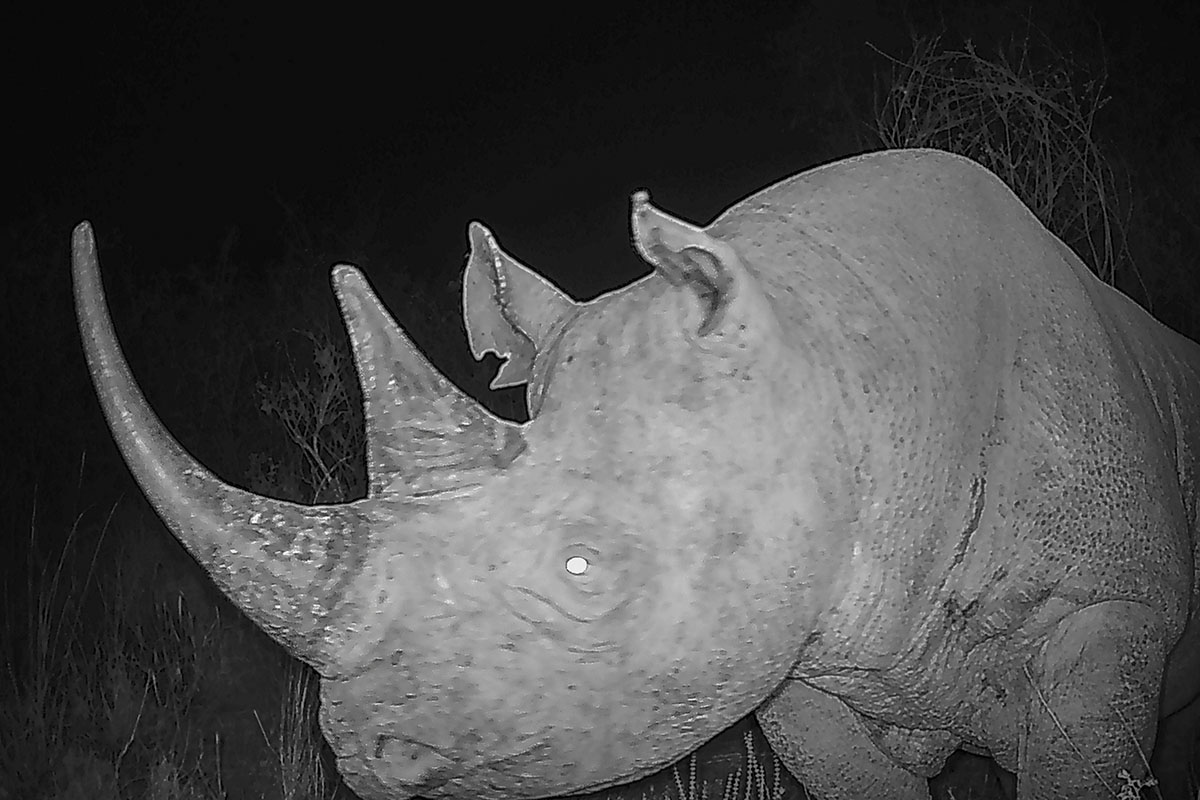
A wall of vegetation looms, brandishing thorny branches that reach out to shred your clothing. Winding elephant paths offer some way through the maze, but the ground is ancient lava, sharply cutting into the soles of your shoes. Fix your eyes on the ground to avoid twisting an ankle, and by the time you look up again, the dense bush has swallowed you whole, eroding all sense of time or direction.
It is no surprise then, that the lava forests of the Chyulu Hills are the hideout of a remarkable population of critically endangered Eastern black rhinos. From a historic population of thousands in the region, today only 8 remain.
The King of this Labyrinth is Dickson. Pictured here, he is estimated to be between 30 and 35 years old, older than many of the Big Life rangers that are protecting him. He is named after one of the four rangers that were the start of Big Life’s anti-poaching program more than three decades ago.
Dickson has been doing his own bit to protect his fellow rhinos. He is very likely the father of the rhino calf that we reported was born a year ago. Thanks to recent sightings of tracks, and blurry camera trap evidence, we know that calf is still alive and well, hidden away in the labyrinth with his mother.
Today on World Rhino Day, we want to thank all those who support our rhino program, particularly the Kenya Wildlife Service, US Fish and Wildlife Service, and Chester Zoo, as well as Royal African Safaris.
